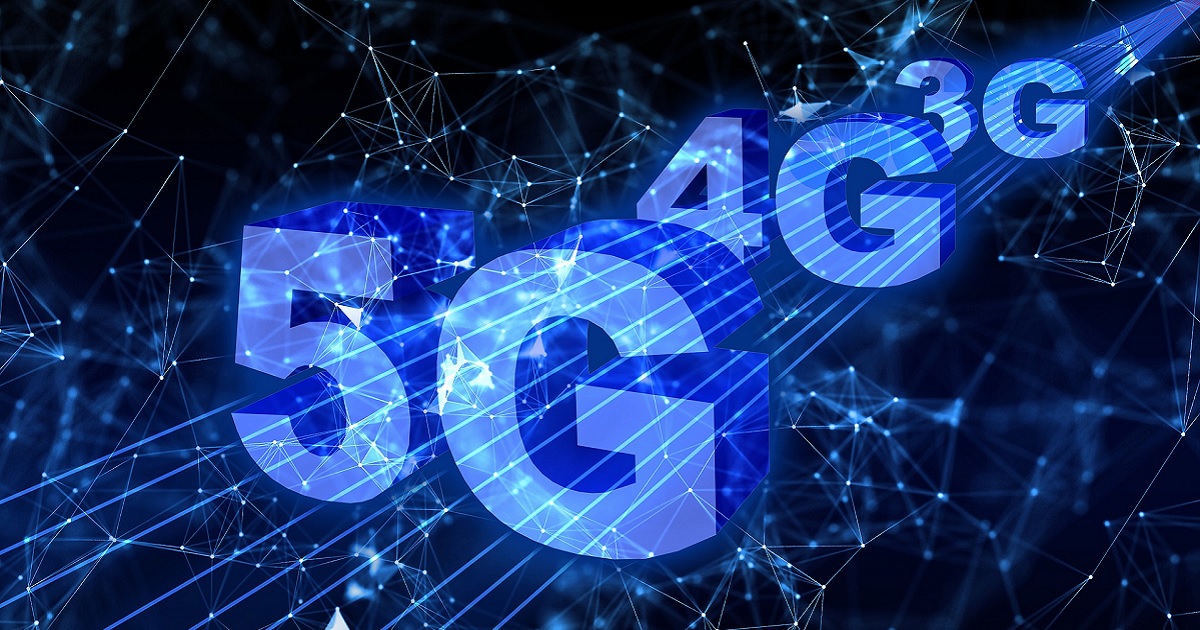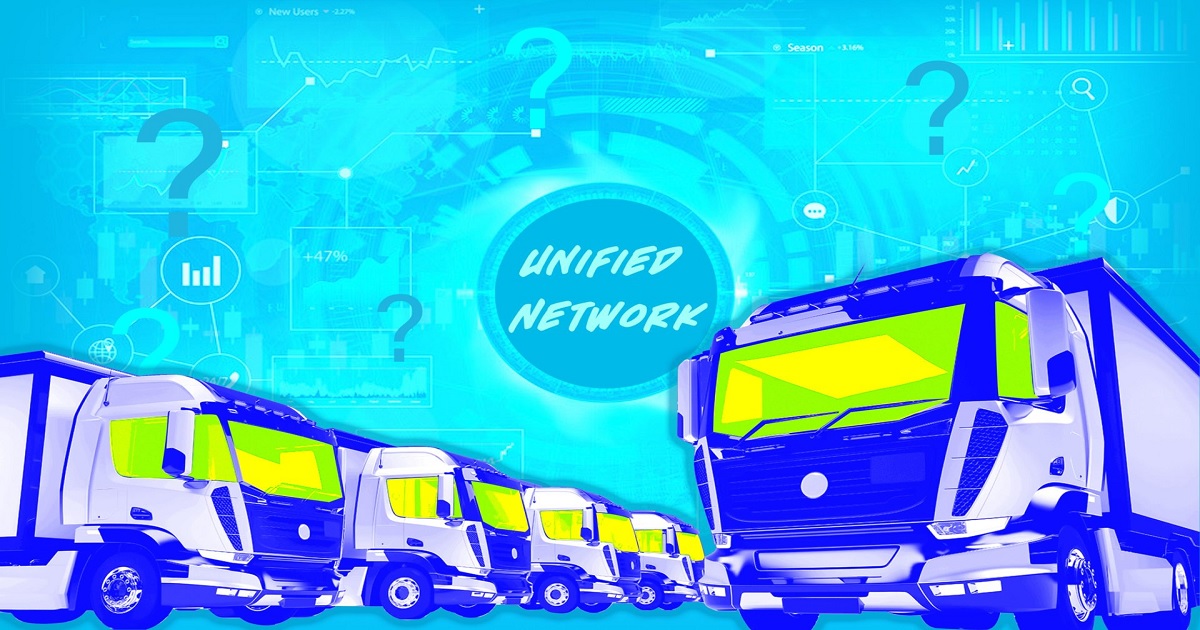
IoT Security
Article | June 28, 2023
Learn more about IoT data protocols and what makes them essential for a cohesive IoT ecosystem. This article will provide a detailed view of data protocols and their importance for modern businesses.
1 Significance of IoT Data Protocols for Business Operations
IoT ecosystems form an integral part of many businesses today, and IoT data protocols serve as the foundation for seamless communication and data exchange between connected devices. IoT protocols ensure the integrity and reliability of data, empowering businesses to make informed decisions, optimize operations, enhance productivity, and drive innovation. With standardized and secure IoT protocols and standards, companies can achieve efficient data transmission and allow for scalability across diverse IoT ecosystems. Understanding and leveraging the right protocols is essential for businesses to benefit from the full potential of their IoT investments and gain a competitive edge in today's interconnected world.
2 Understanding IoT Data Protocols
IoT data protocols are standardized rules and formats that ensure efficient and secure data transmission for efficient IoT communication. By adhering to established protocols such as MQTT, CoAP, and AMQP, businesses can maintain interoperability, scalability, and robust data transmission of IoT data, ensuring efficient data storage and management for their IoT ecosystem. This, in turn, empowers organizations to monitor and control critical processes in real-time and make informed decisions.
2.1 Role of IoT Data Protocols in the IoT Ecosystem
The seamless functioning of an organization's IoT ecosystem relies on the pivotal role played by IoT data protocols. These protocols, serving as the communication backbone, enable secure transfer and efficient data processing, thereby facilitating the seamless exchange of information within the IoT network. Consequently, businesses operating within the IoT sphere can harness the power of reliable data communication enabled by these protocols to unlock insights that drive innovation. IoT data protocols serve as the vital link that fuels the interconnected landscape of IoT devices, elevating the efficiency and efficacy of businesses as they navigate the complex web of IoT technologies and leverage its immense potential.
2.2 Overview of Common IoT Data Protocols
The IoT data protocols come with their own set of applications and challenges. Understanding each protocol's individual use cases will help businesses set up and scale their IoT device ecosystems.
MQTT (Message Queuing Telemetry Transport): MQTT is a lightweight and efficient protocol designed for low-power devices and unreliable networks. It uses a publish-subscribe model, making it ideal for IoT applications where bandwidth and power consumption are crucial factors, such as remote monitoring and control systems.
CoAP (Constrained Application Protocol): For resource-constrained IoT devices, CoAP is designed to enable smooth communication over the Internet. It uses a client-server model and is suitable for IoT applications where devices have limited processing power and memory, such as smart home automation, environmental monitoring, and healthcare systems.
HTTP (Hypertext Transfer Protocol): Although primarily designed for web applications, HTTP is also used in IoT systems for data transmission. The ubiquity and familiarity of HTTP make it a widely supported communication protocol. As a result, it is suitable for IoT devices that require high-level interoperability in applications that involve cloud integration, data analytics, and web-based control interfaces.
AMQP (Advanced Message Queuing Protocol): AMQP is a flexible messaging protocol ensuring reliable, secure, and interoperable communication between IoT devices and back-end systems. It supports both publish-subscribe and point-to-point messaging models, making it suitable for IoT scenarios involving complex routing, large-scale deployments, and enterprise integrations.
Zigbee: Zigbee is a wireless protocol designed specifically for low-power, short-range communication in IoT networks. It operates on the IEEE 802.15.4 standard and is known for its energy efficiency and mesh networking capabilities, leading to its widespread adoption in home automation, intelligent lighting, and industrial control systems.
3 Considerations for Choosing the Right IoT Data Protocol
Selecting a suitable IoT data protocol is essential to maintain smooth interoperability and a unified IoT ecosystem. Compatibility with existing infrastructure is crucial for seamless integration and cost-effective implementation. Security measures must also be robust to protect sensitive data from unauthorized access and potential breaches. Additionally, scalable and flexible data protocols in IoT are vital to accommodate future growth and evolving business requirements. Furthermore, the protocol's reliability and efficiency in transmitting data should align with the use case of IoT systems. Finally, considering the protocol's industry adoption and standardization level will also help minimize risks and enhance interoperability.
4 In Summary
IoT data protocols play a significant role in facilitating efficient and secure business operations within the IoT ecosystem. By learning more about the use cases of the most common protocols in the industry, businesses can consider factors such as compatibility, security, scalability, and reliability while choosing the most suitable option for their business. As IoT systems grow, more complex and reliable data protocols will emerge, paving the way for enhanced connectivity, interoperability, and transformative opportunities across various industries.
Read More

Industrial IoT, IoT Security
Article | July 11, 2023
The Industrial Internet of Things changes our view on the classic concept of production today. The largest manufacturing companies are eager to reach for technological solutions that streamline and increase the efficiency of production processes. With the development of subsequent technologies, interest in the concept of industry 4.0 increases, and thus, the number of connected devices. To meet the demand for infrastructure with adequate capacity and speed it was necessary to evolve towards the next generation of networks – 5G.
Read More

IoT Security
Article | July 5, 2023
As consumer demands evolve, fleet managers are turning to IoT to deliver products faster and more efficiently. The progress being made in edge computing represents the full potential of IoT: the power of data on the move. However, operating on the edge also reveals some of IoT’s greatest challenges: maintaining network security as the number of endpoints multiplies; rethinking traditional business models as industries become increasingly interdependent; and, perhaps most importantly, establishing a seamless, reliable network across borders, cultures, and regulatory environments.
Read More

IoT Security
Article | July 5, 2023
Explore the IoT security solutions for critical issues and proactive solutions for the safe implementation of connected devices. Delve into cross-domain interactions for secure data storage.
Contents
1. Introduction
1.1 Significance of IoT Security for Safe Implementation
2. IoT Security Landscape
2.1 Emerging Threats in IoT Environments
2.2 Importance of Proactive Security Measures
3. Challenges Posed in IoT Systems
3.1 Cross-Domain Interactions
3.2 Denial of Service (DoS) Attacks
3.3 Insecure Interfaces and APIs
3.4 Vulnerable Third-Party Components
3.5 Safeguarding Data Storage and Retention
4. Solutions to Prevent Threats
4.1 Secure Integration and Communication
4.2 Traffic Monitoring and Analysis
4.3 Robust Authentication and Authorization Protocols
4.4 Patch Management and Vulnerability Monitoring
4.5 Access Control and User Authentication
5 Conclusion
1. Introduction
1.1 Significance of IoT Security for Safe Implementation
The significance of IoT connectivity and security for safe implementation is paramount in today's interconnected world. Some essential points highlight its importance at both the business and advanced levels. IoT devices collect and transmit vast amounts of sensitive data. Without proper security measures, this data can be intercepted, leading to breaches of privacy and potential misuse of personal or corporate information. Implementing robust IoT security ensures the protection of data throughout its lifecycle. Safeguarding Critical Infrastructure is crucial as Many IoT deployments are integrated into critical infrastructure systems such as power grids, transportation networks, and healthcare facilities. A breach in the security of these interconnected systems can have severe consequences, including disruption of services, financial losses, and even threats to public safety. IoT security helps mitigate these risks by preventing unauthorized access and potential attacks.
Mitigating financial losses, ensuring operational continuity and preventing IoT botnets and DDoS attacks contribute to security as IoT devices are often integrated into complex ecosystems, supporting various business operations. In recent years, compromised IoT devices have been used to create massive botnets for launching distributed denial-of-service (DDoS) attacks. These attacks can overwhelm networks and cause significant disruptions, affecting the targeted businesses and the internet infrastructure as a whole. Robust IoT security measures, such as strong authentication and regular device updates, can help prevent these attacks.
2. IoT Security Landscape
2.1 Emerging Threats in IoT Environments
Botnets and DDoS Attacks
Botnets, consisting of compromised IoT devices, can be leveraged to launch massive distributed denial-of-service (DDoS) attacks. These attacks overwhelm networks, rendering them inaccessible and causing disruptions to critical services.
Inadequate Authentication and Authorization
Weak or non-existent authentication and authorization mechanisms in IoT devices can allow unauthorized access to sensitive data or control of connected systems. This can lead to unauthorized manipulation, data breaches, and privacy violations.
Firmware and Software Vulnerabilities
IoT devices often rely on firmware and software components that may contain vulnerabilities. Attackers can exploit these weaknesses to gain unauthorized access, execute malicious code, or extract sensitive information.
Lack of Encryption and Data Integrity
Insufficient or absent encryption mechanisms in IoT communications can expose sensitive data to interception and tampering. Without data integrity safeguards, malicious actors can modify data transmitted between devices, compromising the integrity and reliability of the system.
Physical Attacks and Tampering
IoT devices deployed in public or accessible locations are vulnerable to physical attacks. These attacks include tampering, theft, or destruction of devices, which can disrupt services, compromise data, or manipulate the functioning of the IoT ecosystem.
Insider Threats
Insiders with authorized access to IoT systems, such as employees or contractors, may abuse their privileges or inadvertently introduce vulnerabilities. This can include unauthorized access to sensitive data, intentional manipulation of systems, or unintentional actions compromising security.
Supply Chain Risks
The complex and global nature of IoT device supply chains introduces potential risks. Malicious actors can exploit vulnerabilities in the manufacturing or distribution process, implanting backdoors or tampering with devices before they reach end-users.
2.2 Importance of Proactive Security Measures
Security measures are vital for ensuring the safety and reliability of IoT environments. Organizations can mitigate risks and stay ahead of potential vulnerabilities and threats by taking a proactive approach. These measures include conducting regular vulnerability assessments, implementing robust monitoring and detection systems, and practicing incident response preparedness. Proactive security measures also promote a 'Security by Design' approach, integrating security controls from the outset of IoT development. Compliance with regulations, safeguarding data privacy, and achieving long-term cost savings are additional benefits of proactive security. Being proactive enables organizations to minimize the impact of security incidents, protect sensitive data, and maintain their IoT systems' secure and reliable operation.
3. Challenges Posed in IoT Systems
3.1 Cross-Domain Interactions
Cross-domain interactions refer to the communication and interaction between IoT devices, systems, or networks that operate in different domains or environments. These interactions occur when IoT devices need to connect and exchange data with external systems, platforms, or networks beyond their immediate domain. Incompatibilities in protocols, communication standards, or authentication mechanisms can create vulnerabilities and potential entry points for attackers.
3.2 Denial of Service (DoS) Attacks
Denial of Service attacks are malicious activities aimed at disrupting or rendering a target system, network, or service unavailable to its intended users. In a DoS attack, the attacker overwhelms the targeted infrastructure with an excessive amount of traffic or resource requests, causing a significant degradation in performance or a complete service outage. Protecting IoT devices and networks from DoS attacks that aim to disrupt their normal operation by overwhelming them with excessive traffic or resource requests becomes challenging. The issue here lies in distinguishing legitimate traffic from malicious traffic, as attackers constantly evolve their techniques.
3.3 Insecure Interfaces and APIs
Insecure interfaces and application programming interfaces (APIs) refer to vulnerabilities or weaknesses in the interfaces and APIs used by IoT devices for communication and data exchange. An interface is a point of interaction between different components or systems, while an API allows applications to communicate with each other. Insecure interfaces and APIs can be exploited by attackers to gain unauthorized access to IoT devices or intercept sensitive data. Ensuring secure authentication and authorization mechanisms, proper encryption of data in transit, and secure storage of API keys and credentials, thus, becomes a challenge.
3.4 Vulnerable Third-Party Components
Vulnerable third-party components refer to software, libraries, frameworks, or modules developed and maintained by external parties and integrated into IoT devices or systems. These components may contain security vulnerabilities that attackers can exploit to gain unauthorized access, manipulate data, or compromise the overall security of the IoT ecosystem. Pain points arise from the challenge of assessing the security of third-party components, as organizations may have limited visibility into their development processes or dependencies.
3.5 Safeguarding Data Storage and Retention
Data storage and retention refers to the management and security of data collected and generated by IoT devices throughout its lifecycle. Safeguarding stored IoT data throughout its lifecycle, including secure storage, proper data retention policies, and protection against unauthorized access or data leakage, poses a threat. Ensuring secure storage infrastructure, protecting data at rest and in transit, and defining appropriate data retention policies include safeguarding data and maintaining the privacy of stored data. Failure to implementing strong encryption, access controls, and monitoring mechanisms to protect stored IoT data leads to this issue.
4. Solutions to Prevent Threatsc
4.1 Secure Integration and Communication
Implement secure communication protocols, such as transport layer security (TLS) or virtual private networks (VPNs), to ensure encrypted and authenticated communication between IoT devices and external systems. Regularly assess and monitor the security posture of third-party integrations and cloud services to identify and mitigate potential vulnerabilities. Organizations need to invest time and resources in thoroughly understanding and implementing secure integration practices to mitigate the risks associated with cross-domain interactions.
4.2 Traffic Monitoring and Analysis
Deploy network traffic monitoring and filtering mechanisms to detect and block suspicious traffic patterns. Implement rate limiting, traffic shaping, or access control measures to prevent excessive requests from overwhelming IoT devices. Utilize distributed denial of service (DDoS) mitigation services or hardware appliances to handle volumetric attacks. Organizations must deploy robust traffic analysis and anomaly detection mechanisms to identify and mitigate DoS attacks promptly. Additionally, scaling infrastructure and implementing load-balancing mechanisms become essential to handle sudden surges in traffic during an attack.
4.3 Robust Authentication and Authorization Protocols
Apply secure coding practices and implement strong authentication and authorization mechanisms for interfaces and APIs. Utilize secure communication protocols (e.g., HTTPS) and enforce strict access controls to prevent unauthorized access. Regularly update and patch interfaces and APIs to address any known vulnerabilities. Organizations must conduct regular security audits of their interfaces and APIs, implement strong access controls, and regularly update and patch vulnerabilities to address these effectively.
4.4 Patch Management and Vulnerability Monitoring
Conduct thorough security assessments of third-party components before integration, verifying their security track record and ensuring they are regularly updated with security patches. Establish a process for monitoring and addressing vulnerabilities in third-party components, including timely patching or replacement. Establishing strict vendor evaluation criteria, conducting regular security assessments, and maintaining an up-to-date inventory of third-party components can help address these issues and mitigate the risks associated with vulnerable components.
4.5 Access Control and User Authentication
Encrypt stored IoT data to protect it from unauthorized access or leakage. Implement access controls and user authentication mechanisms to restrict data access based on role or privilege. Establish data retention policies that comply with relevant regulations and securely dispose of data when no longer needed. Clear data retention policies should be established, specifying how long data should be stored and when it should be securely deleted or anonymized to minimize data leakage risks.
It's important to note that these solutions should be tailored to specific organizational requirements and constantly evaluated and updated as new threats and vulnerabilities emerge in the IoT security landscape.
5. Conclusion
Ensuring the safe implementation of IoT requires overcoming various security challenges through proactive measures and a comprehensive approach. By implementing proactive security measures, organizations can mitigate risks and maintain the safety and reliability of IoT environments. Overcoming these challenges requires organizations to invest in certain integration practices, traffic analysis, authentication mechanisms, encryption protocols, and vendor evaluation criteria. Overcoming IoT security challenges for safe implementation necessitates a proactive and comprehensive approach encompassing vulnerability management, monitoring and detection, incident response preparedness, secure design practices, compliance with regulations, and robust data storage and retention mechanisms.
The emergence in IoT security encompasses the incorporation of machine learning and AI for improved threat detection, the application of blockchain for secure transactions and device authentication, the integration of security measures at the edge through edge computing, the establishment of standardized protocols and regulatory frameworks, the adoption of advanced authentication methods, and the automation of security processes for efficient IoT security management. These trends aim to address evolving risks, safeguard data integrity and privacy, and enable IoT systems' safe and secure implementation.
Read More